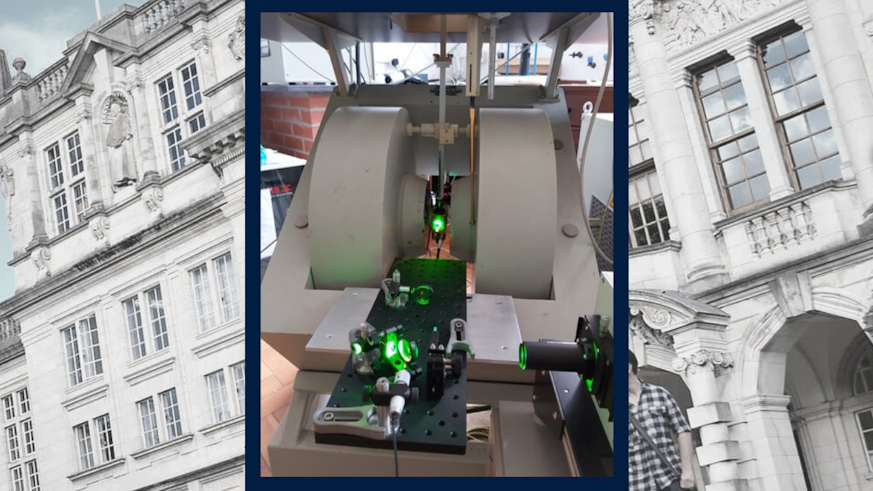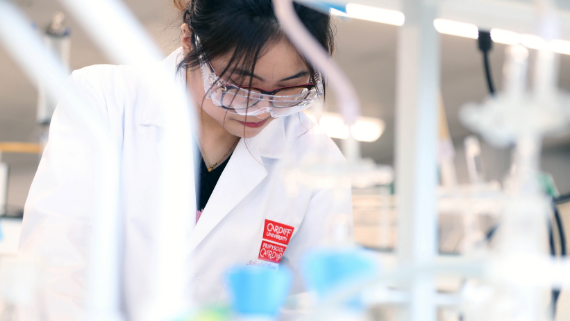Single or double? Understanding chemical reactivity of non-metal systems
16 March 2021

A research team at Cardiff’s School of Chemistry have combined synthetic chemistry and advanced analytical techniques to understand how chemical bonding between carbon atoms can be controlled without the use of metals. This work has been supported by their recently awarded Leverhulme Trust grant.
The complex molecules we all need as pharmaceutics and fine chemicals require the controlled formation of new bonds between carbon atoms. Therefore coupling reactions to create carbon-carbon bonds have been important targets for academic chemistry since the 19th Century.
However, most of the approaches require expensive or rare metals which then need careful management to avoid environmental impacts.
Chemical bonds are formed by the movement of electrons between molecules and the reactions are named to tell us how many electrons are involved.
For example, the 2010 Nobel Prize for Palladium-catalysed C–C bond construction was based on double-electron transfer, whereas more recent advances have been made by using first-row metals that undergo single-electron transfer processes.
Over the last 10 years, an emerging trend has been established to provide alternative and sustainable routes to achieving similar chemical transformations using metal-free routes. Typically, these take place through double-electron transfer.
The research team at Cardiff, lead by Dr Rebecca Melen, Dr Niek Buurma, and Dr Emma Richards also included a Postdoctoral Research Assistant, Ayan Dasgupta, Cardiff PhD student, Kate Stefkova, and a collaboration with Computational Chemists at the University of Tasmania in Australia.
Together they have challenged the existing knowledge of metal-free transformations by identifying a new low-energy single-electron process akin to 1st-row metals.
In fact, they found that the reactivity of non-metal systems can be varied between a single- or double-electron pathway depending on the reaction conditions. Which means that the exact route used in a particular synthetic procedure can be controlled.
The success of this in-depth study came about through testing a variety of techniques available within the School of Chemistry, allowing the team to understand key factors that govern the chemical reactivity of these systems.
These techniques included using computational calculations, and kinetic and electron paramagnetic resonance (EPR) studies.
This work shows that by understanding the mechanism of the reaction, new non-toxic routes to drug compounds can be developed that do not rely on processes requiring metals.
This exciting research stemmed from a recently awarded grant, secured by Dr Melen and Dr. Richards. The Leverhulme Trust grant, Single or Double? A Radical Approach to Synthesis via Frustrated Lewis Pairs has been reported in J. Am. Chem. Soc.
Share this story
Full details of our BSc and MChem courses, including how to apply.
